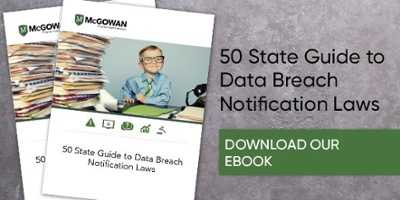On June 21, 2018, the United States Supreme Court ruled 5-4 in South Dakota v. Wayfair. The ruling essentially put an end to online sellers and buyers avoiding sales tax. Effectively states can collect and remit sales tax on businesses that do not have a physical presence in that state if they do more than 200 transactions or $100,000 in in-state sales. To date, 44 states have not surprisingly chosen to start collecting taxes. The four states not collecting do not have sales tax.
The Wayfair decision has triggered the introduction of numerous pieces of legislation over the past two years. In January 2019, The Protecting Businesses from Burdensome Compliance Cost Act (H.R. 379) was introduced to “ease the burden for out-of-state vendors” attempting to comply with sales tax mandates in other states. The ultimate goal of that legislation would be to overturn the Wayfair decision.
Other pieces of legislation with the same goal have been introduced, none of which have gained momentum. Businesses need to be aware of the Wayfair decision, stay in compliance, and have a strategy to mitigate associated risks.
The impact of the Wayfair decision on business
Understanding the Wayfair decision can get complicated. The starting point is gaining an understanding of what is called a “nexus footprint.” This is where a lot of business owners start feeling overwhelmed. Nexus is just a term that refers to the amount of presence a business has in a location. If a company sells goods to customers that live in a particular state, then the business has a nexus in that state. What’s important is determining the nexus footprint.
For example, if a business sells products to online customers in the 44 states, they need to be aware of each state’s tax threshold. Alabama, for example, has an economic nexus law with a threshold amount of $250,000 in sales but no threshold on the number of transactions. New York has a larger threshold of $500,000 in sales but a much more restrictive transaction amount threshold of 100.
How to help clients
Businesses should have a plan to navigate challenges and maintain compliance. Here are some recommendations:
- Understand the client’s business — How are sales made? Where is inventory kept? What post-sales are provided? Does the client have employees in other states?
- Source the client sales and number of transactions by state and year — CPAs and accounting professionals need to figure out the potential economic nexus exposure. By taking a full analysis of which products and services are taxable in what states, they can ensure they meet requirements. Remember, economic nexus thresholds are calculated on sales of goods and services before sales tax exemptions are taken into account.
- Determine if client has a sales tax collection requirement in those states for each year — Each state is not the same. Practitioners can gauge the severity of the exposure for clients by knowing the thresholds. States have been implementing new sales tax economic nexus standards with effective dates. Client exposure will depend on when the standard was implemented. Know every county and municipal level for threshold and when collection requirements were implemented.
- Get compliant — Clients need to know when, where, and how to get compliant. It may make sense to register all at once or over several months in states identified as having economic nexus. Delaying can result in liability.
It is possible to get penalties waived if they come up, but it will be on a case-by-case basis. Ensure clients are registered only where needed and for the tax types necessary. Clients will be audited and its possible they may see multiple audits simultaneously. Make sure to communicate with clients about nationwide exposure for sales tax and stay ahead of the curve.
McGowan Program Administrators has created a program for public accounting firms nationwide. The program is called CPAOnePro. We’re excited to offer you what we believe is the best insurance policy available for CPA firms today.



